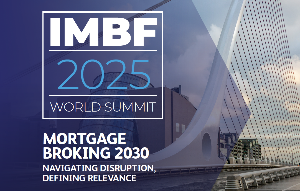
So, what is a stress test and what form should it take? Stress testing is a simulation-based tool that puts “stress scenarios” on a portfolio to see how it reacts in that given situation. It carries a high level of complexity with hundreds of data points being pulled in all different directions. These “stress scenarios” are then run thousands of times with a Monte Carlo simulation, which slightly changes each variable by a defined probability distribution to find an average. These simulations require sophisticated software, one example is the Bloomberg’s Portfolio System.
The scenarios are limited only by the imagination of the manager but typically focus on historical events that have had sizeable impacts on financial markets. A good example would be running a current portfolio through the GFC market collapse to see how it fares.
While limitless in its options, a robust stress test should have at least the following attributes:
- Relevance – the stress test scenario should be relevant to the type of portfolio. For instance, there is no point testing Emerging Market interest rate movements on a Developed Market equity portfolio
- Granularity – the stresses must be applied to each individual asset in the portfolio, rather than the aggregate portfolio
- Understandable – The stress scenario should be meaningful to the investor and the output explainable
- Completeness – the test must include all assets in the portfolio
Here’s how the FMA have described stress testing:
“The stress testing scenarios should cover a range of factors that can create extraordinary losses or make the control risk within the investment strategy difficult”
While the computation and engineering can be complex, interpreting a stress test doesn’t have to be. When keeping the output simple it is best to use portfolio returns under each scenario. The different returns can give a manager great insight into the characteristics of their portfolios. Stress testing becomes even more powerful when the results can be compared with other stress tested portfolios. This could include:
- Comparing to benchmark – this allows managers to see how their risk position would react compared to how the benchmark portfolio reacts, adding a lot of value to key risk decisions
- When adding new positions – once a manager has highlighted a potential investment they can hypothetically add it to their portfolio and rerun the test observing how the returns change under the same scenarios
- A portfolio with protection – how would the stress test look if the manager adds protection to the portfolio? This could include increased cash, put options or short index futures
It can also be useful to consider whether the portfolio has sensitivities to certain events more than the market, could the overweight position in technology adversely affect your portfolio in another dot.com bubble-like scenario? Does the property portfolio become too sensitive to interest rate changes or the Russian Financial Crisis?
Finally, does your fund manager share the results of their stress testing with you? This should be an open-door policy because stress testing is perhaps the best way to see how your investments could fare in a tail event. Stress test results provide a much more meaningful picture of a portfolio’s future risk than the prescribed risk indicator found in Product Disclosure Statements. This is a rather under-cooked risk measure, calculated on 5 years of weekly return volatility in what has been a subdued period for markets especially in 2017.
The risk for investors is more than a mere volatility measure – it is about the potential loss of capital. While future market crisis events will always be different from the past, a well-constructed stress test can provide valuable insight into those potential losses.
Karl Geal-Otter is an investment analyst at Pathfinder Asset Management, a boutique responsible investment fund manager. This commentary is not personalised investment advice - seek investment advice from an Authorised Financial Adviser before making investment decisions.




Comments
No comments yet.
Sign In to add your comment